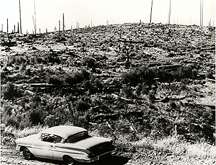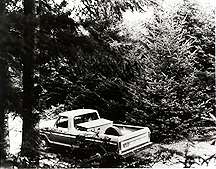






|
Tree Farming
Tree Farming Ecology
 Photo:
Courtesy of Forest History Society, Inc., Durham, North Carolina. Photo:
Courtesy of Forest History Society, Inc., Durham, North Carolina.
Logging in old-growth forests may mean destroying a non-renewable resource - at the
least, non-renewable in the lifetimes of present inhabitants of the earth. But plantations
are not exempt from ecological concerns either. They are not forests; they are
agricultural crops, seeded entirely for commercial purposes. They are not habitats for
wild flora and fauna, and they often displace such habitats. They displace other
vegetation, often including trees but also many plants that are or may be vital to total
ecosystems. Plantations are monocultures, and the lack of biodiversity is of concern. They
typically have sparse canopies and so do not protect the land; they cause air temperatures
to rise, and they deplete, rather than increase, the watertable. They are generally exotic
to regions. While the initial planting may be free of natural pests and diseases, that
situation will not last, and plantation regions may not be in the position to combat
scourges yet to arrive. Marchak, M. P. (1995).
Logging the globe. Montreal & Kingston, Jamaica: McGill-Queen's University
Press, p.10.
 Further information on the importance
of tree fungi can be found under Diversity: Fungus and Diversity: Trees (Epidemics in the Forest). Further information on the importance
of tree fungi can be found under Diversity: Fungus and Diversity: Trees (Epidemics in the Forest).
Photo: Courtesy of Forest History Society,
Inc., Durham, North Carolina.
[ Diversity ] [ Ecosystem Flexibility ] [ Natural & Human
Disturbance ]
[ Logging ] [ Tree Farming: page 1 / page 2 ]
[ Precipitation & Water Supply ] [ Researchers ]
[ Glossary
] [ Related Links
]
[ References
] [ PBL Model
]
[ Home
] [ Teacher
Pages ] [ Modules
& Activities ]
|



